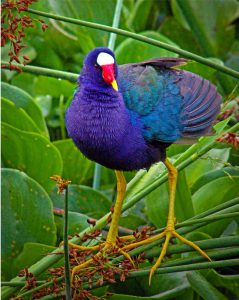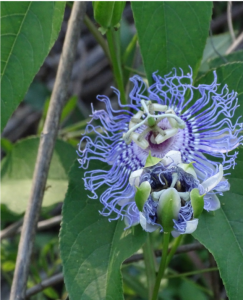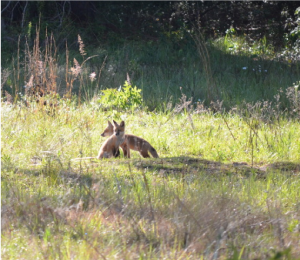By Katrina Rossos

Learning more about the species’ in your yard and neighborhood can be just as easy as stepping outside with your smartphone. This spring, the public—no matter their background—can become active ecologists in the iNaturalist City Nature Challenge, a competition where people around the world record and identify local plant and animal species within a four-day period.
A joint initiative of the California Academy of Sciences and the National Geographic Society, iNaturalist is a citizen science monitoring platform where people upload photos of flora and fauna wherever they are. The user can identify the species they’ve uploaded or have other naturalists on the network help make an ID. When a smartphone’s geolocator is on, the accurate GPS location of the image is chronicled as well, creating a mine of species distribution data. This information enhances biodiversity science because all findings are shared with scientific data repositories, including the Global Biodiversity Information Facility, so researchers can use this data in their work.

Organized by the University of California Natural History Museum, the iNaturalist City Nature Challenge calls upon iNaturalist users all over the world to upload and identify as many species as possible within four days. The purpose of the challenge is to encourage people to learn about the vegetation and wildlife outside their homes – in their yards, neighborhoods, and nearby natural areas. In 2020, 240 cities participated in this “bioblitz”, and Alachua County ranked 21 in the world with almost 400 local participants and more than 10,000 observations.
This year, the iNaturalist City Nature Challenge takes place from April 30 through May 3. Locally, University of Florida IFAS Extension and the Florida Museum of Natural History are co-organizing the iNaturalist City Nature Challenge in Alachua County. To ensure all photos are properly recorded in the city challenge, participants must turn on the geolocator in their smartphone so the GPS location is recorded as the image is uploaded. While the pictures must be taken between April 30 and May 3, participants have until May 9 to upload their photos.
Department of Wildlife Ecology and Conservation Professor and Extension Specialist Mark Hostetler, Ph.D., introduced Alachua County to the event in 2020.
“I was astounded as an urban ecologist when I started taking pictures of plants in my yard and neighborhood, I was like, ‘there’s thousands of species here.’ You just don’t realize until you start doing it,” he said of the iNaturalist app.
Hostetler’s research and outreach focuses on informing residential developers on how they can best map out neighborhoods to increase wildlife and how citizens can optimally manage their yards to minimize impacts on nearby natural areas.
“My research has always been about thinking about how we can design and manage cities for biodiversity,” said Hostetler. Research within his lab has shown that small forest fragments, tree canopy cover, and other urban areas provide ideal habitat for a variety of species. In particular, residential trees and forest fragments provide habitat for over 200 species of birds, and an online tool helps decision makers to evaluate development designs and impacts on bird habitat. And, iNaturalist data proffers further evidence about the number of plants and animals that thrive within urban and residential areas.

Those who do not know the identification of many local species should not shy away from the iNaturalist City Nature Challenge. Since iNaturalist is a community platform, many plant and animal experts contribute to the site and often scour user-uploaded photos to help people make accurate identifications. Furthermore, if you do make a species identification that is incorrect, oftentimes these naturalists will correct you and open up a discussion about the species. This open communication makes the platform a great space for individuals who are interested in learning more about the natural world from plant and wildlife experts. Additionally, iNaturalist has machine learning built into the application; it compares uploaded photos against all other accurately-identified images and suggests a species identification.
“Part of this exploration in raising awareness is not only about producing research and publishing in journals, it’s also about getting people involved in restoration activities and raising awareness about the native plants and animals that occur in their yards and neighborhoods,” Hostetler said. iNaturalist does just that – it encourages people to step outside and take a much closer look at what is living and growing just feet from their front doors.
To learn how to download and use the iNaturalist app, check out this video created by Dr. Mark Hostetler: https://www.facebook.com/groups/473775399872755/permalink/627080041208956/
 0
0
